We may earn commissions when you buy from links on our site. Why you can trust us.
Review of the Quell Wearable Pain Relief Device
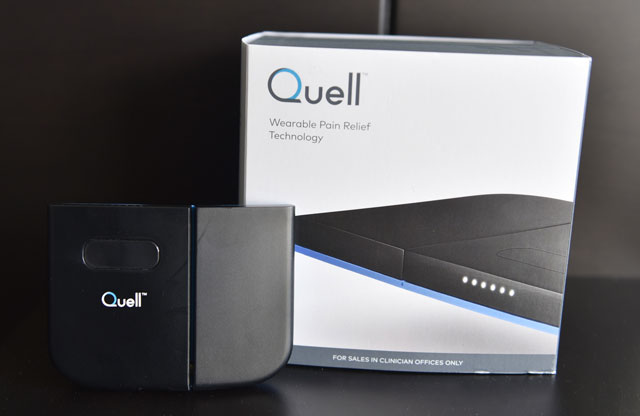
Being “drug-free” usually references illegal substance abuse, but prescriptions for chronic pain can lead to damaging dependency as well. For those eager to try a pain reliever that doesn’t require popping pills, wearable technology and neuroscience may have an answer.
NeuroMetrix claims to have found a workable solution that could apply to anyone dealing with chronic pain from illness, injuries or disability. The Quell ($249 on Amazon) is a device that you wear on your calf, but treats pain anywhere—your back, shoulder, knee—using electro-stimulation to provide relief through the body’s own internal painkillers.
On its base premise alone, you could be forgiven for viewing this as pie in the sky out of an infomercial, but there is evidence to back it up, and the Food and Drug Administration (FDA) has approved it through the 510(k) process as a Class II Medical Device for chronic pain relief. Where it’s placed also makes it easy to discount Quell’s ability to provide relief. But that too is based in science.
The upper calf holds a number of different nerve endings that traverse the body. The technology in the Quell makes it a Transcutaneous Electrical Nerve Stimulation (TENS) unit because it essentially sends pulses through that area and up the spinal cord, triggering the brain to raise endorphins. This prevents or reduces pain signals from reaching the brain, while releasing opioids to relieve pain in the process.
Opioids are the key here. Medical research going back to the 1960s experimented with high frequency peripheral nerve stimulation to gauge how they can respond and elevate natural pain modulating chemicals in the cerebrospinal fluid (CSF). Without getting into too much medical terminology, hydrocodone, meperidine and oxycodone are prescription opioids that can do the same thing, except they do so through a different receptor in the body than electro-stimulation does. The results may be similar, but the path to get there isn’t necessarily the same, according to a whitepaper written by Dr. Shai Gozani, founder and CEO at NeuroMetrix.
In other words, the pills could have side-effects, while the Quell shouldn’t.
As opioid levels increase, they stick around for about 40 minutes after the stimulation ceases. This is why the Quell stimulates for one hour, and then automatically turns off on its own for another hour, before turning back on again. The on-off process allows the opioids to keep working until they go back to baseline levels, avoiding overstimulation.
While there are other over-the-counter TENS units available, like the Icy Hot line, none of the others are designed for chronic pain and all-day wear, including while sleeping. And, none of the others qualify for insurance reimbursement.
Using Quell
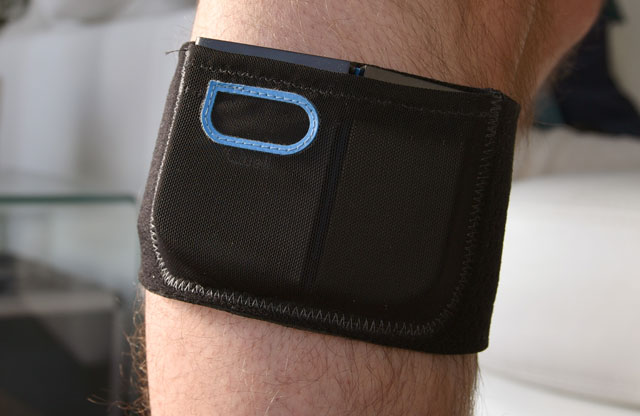
Getting set up and started is a breeze. The flexible sports band includes a holster for the device, which also has an open slit on either side — one for the power button, the other revealing two clips. The latter are meant to attach to a strip of gels that adhere to the skin, holding it all in place, while also pushing through the electric pulses the device generates.
The strap has to be worn on the upper calf (left or right, doesn’t matter), and go through a quick calibration process consisting of holding the power button for five seconds each time to increase pulse strength to a comfortable level of tolerance that doesn’t feel like being shocked. You should feel it work, though feel relaxed at the same time.
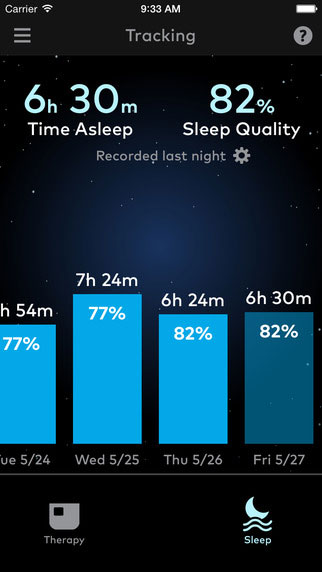 It’s designed to be worn anytime you need the relief, which can vary from all times of the day to instances where pain may be more prominent. This also includes during sleep, and the device has been optimized to recognize the wearer is in a slumber when the user sets it manually on the free Quell iOS or Android app, or reduces pulse strength to a gentler mode that isn’t distracting by pressing the button on the side. Wearing it during sleep is somewhat of a novelty, considering NeuroMetrix is currently the only company to have a TENS device available over the counter that is cleared for use while asleep.
It’s designed to be worn anytime you need the relief, which can vary from all times of the day to instances where pain may be more prominent. This also includes during sleep, and the device has been optimized to recognize the wearer is in a slumber when the user sets it manually on the free Quell iOS or Android app, or reduces pulse strength to a gentler mode that isn’t distracting by pressing the button on the side. Wearing it during sleep is somewhat of a novelty, considering NeuroMetrix is currently the only company to have a TENS device available over the counter that is cleared for use while asleep.
Neither waterproof nor especially sweatproof, there’s something of a fine line when and where the Quell can be used during activity. Marketing materials and images show a runner and golfer, and those two activities probably could work, given that the device can excel in more passive sports and activities — of which there are many. Golf, table tennis, rollerblading, hiking, brisk walking, bike riding, billiards and driving, among others.
Even in the gym, the bike, elliptical, treadmill and other machines should be fine. It is possible to wear the Quell during a gym workout, but I personally found it to be distracting. For example, leg exercises can feel a little off if the Quell is pulsing at the same time. Upper body exercises are generally fine, though I personally opted not to wear it during heavy cardio activity.
Activities that probably wouldn’t work, either because of equipment or environment, would be ice hockey, beach volleyball, football or almost any other sport where diving, water or physical contact is going to happen. The device doesn’t have any serious protection and isn’t ruggedized to withstand punishment.
Note that people with a cardiac pacemaker, implanted defibrillator or other implanted metallic or electronic device are best served to consult with their doctor first before using the device
Does Quell work?
I’ve battled tendinitis in both knees in the past, and have a hip flexor issue that sometimes leads to pain and discomfort. Both problems made me a good candidate to discover what kind of pain relief could be achieved from this device.
In my case, I’ve worn the device since January. It took three days before I started feeling a positive effect, yet took weeks before a lasting impact left an impression on me. NeuroMetrix recommends four-to-six hours “for the first several weeks,” which I would agree with. I wore it all the time, regardless of whether I was home or out at a social gathering. I even traveled with it. Under a pair of jeans or pants, the device was pretty inconspicuous.
The Quell soon faded into the background, to the point where I neither noticed the pulses nor the pain unless I strained or twisted my body too much. It never woke me up from sleep and the gel strips held up well, though I never used them during rigorous workouts.
The company says that some users may experience skin irritation. Other than a little itchiness at the start, I experienced nothing like that.
One thing that’s difficult to assess when testing a product like Quell is how it might impact someone else. A review on Forbes from someone with myofascial pain syndrome found it lessened her pain. Know that the device is inherently subjective because the wearer’s body reacts to it at different intensities. By no means, is it a cure for chronic pain, only a medication-free substitute that can do away with prescriptions to painkillers.
That being said, the Quell isn’t going to do anything for chronic headaches and migraines because they occur in a different area of the brain. Debilitating injuries that are really severe, like fractures, cracked ribs or torn tendons may not benefit from the Quell’s pulses, but you should consult a doctor before using the device, in any case.
This is why NeuroMetrix seems to try not promising too much, noting that the Quell is well-suited for those suffering from sciatica pain, fibromyalgia, diabetic neuropathy and osteoarthritis. All of those are chronic musculoskeletal conditions that require regular maintenance, which is what the device is designed for. Standard and temporary aches and pains from tough games or workouts can be lessened with it, but that’s not the main purpose.
Battery life
Battery life is rated at about 30-40 hours, which is mostly accurate, as the number is affected by how intense the pulses are. I easily went a full 36 hours using it before needing to recharge the unit (which takes about two hours to recharge), but found that I had to take it off every few hours or so to let my skin breathe in my upper calf.
The Quell app
The free Quell app isn’t required to operate the device, but exists as a way to learn how to use the device and track progress over a current therapy session or over the course of a day. Manual controls are limited, except it is possible to set the device to Full Power, Bedtime Only or Gentle Overnight. Bedtime Only limits therapy only to when falling asleep. The setting only applies, however, to when the device itself is on Auto-Restart (which it is by default), meaning that a new 60-minute cycle begins every second hour.
Beyond that, you can use the app to note when you replaced the electrode strips, and then get a notification on your phone that they are due for replacement later on. The app is helpful for troubleshooting Bluetooth pairing issues and offers a direct link to purchase new strips from the company website.
Paying for Quell
At $250 to start (it comes with two strips in the box), the Quell isn’t inexpensive, yet isn’t priced out of reach, either. Despite clearance from the FDA to sell the Quell without a prescription, the company concedes most insurance companies will not cover the cost directly. Instead, it encourages prospective buyers to contact their insurer to find out for sure. For those enrolled in either the Flexible Spending Account (FSA) or Health Savings Account (HSA) programs, the device is entirely eligible for reimbursement. There is a 60-day money back guarantee in case you come away feeling like it did nothing for you.
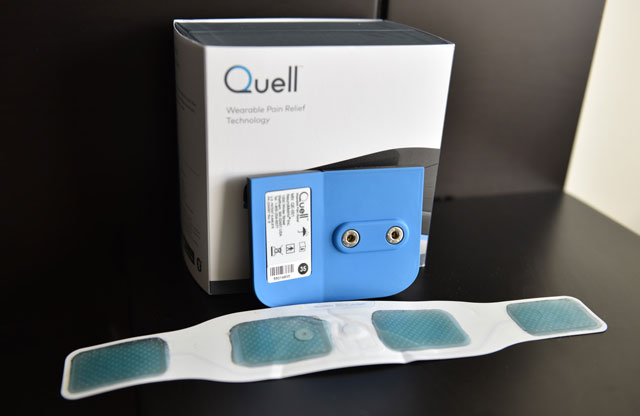
The gel strips are where NeuroMetrix ultimately derives its earnings. At $30 for a pair (or $29.95 on Amazon), each of which last two weeks upon daily usage, the Quell effectively becomes a monthly expense for the regular wearer. Readily available through the company website or Amazon, users can save a little money buying larger packs that include more strips at a reduced price.
It’s the residual cost that has to be measured because, assuming that it’s to be worn daily, that’s another $30 per month. If prescriptions are costing more than that, there may be a savings to consider here, both in monetary and health terms.
The bottom line
Wearable technology may still be unproven, in many respects, but the Quell bucked the trend, showing me that it was anything but snake oil. It shouldn’t be misconstrued as a replacement for physiotherapy and other treatments that can reverse chronic pain or injury, but when it comes to management, this is one device that can make a difference.
While skeptical at first, I’ve since come away feeling like it worked for me. I know not to shirk my exercise and rehab routine, but at least the Quell helps in between when I could use some relief. It is worth a try if you find yourself in the same position.
Quell Wearable Pain Relief Device
[Image credits: Ted Kritsonis/Techlicious, Quell]
Discussion 
I have a Medtronic implanted morphine pain pump, will it interfere with it?
My assumption would be no, but it’s always best to check with your doctor on whether the Quell or another TENS device will interfere with a specific type of implanted medical equipment.
I have peripheral neuropathy so badly I can barely walk, as my toes are curled under. They can rub against each other, and have caused wounds that have led to several partial toe amputations (sugar is controlled).
I take heavy duty pain meds every day and have for seven years. Its utterly unbearable without it. I see this thread is almost two years old, but I haven’t heard of Quell till a commercial tonight. I’d think if a device could help many chronic pain sufferers (I get it, not all), to the point that opioids could be greatly lessened, if not eliminated, it would be an enormously touted device by doctors, especially with the opioid crisis making us who suffer horribly with chronic pain afraid the crackdown because of people who use them for their high, then OD, might affect us all at some point.
I see that its touted for help with diabetic neuropathy, yet on this very thread, people with nerve pain are severely warned about it getting worse by a sufferer.
Most of us on opioids are on them for pain management and couldn’t care less about getting high. If we thought there was a path to some relief without using - or drastically cutting back - on pain meds, boy, we’d jump at the chance. I don’t know what to think.
IS THIS DEVICE COVERED BY MEDICARE
TENS devices are only covered by Medicare when prescribed by a physician and when specific conditions are met regarding your treatment needs. It’s best to talk with your physician and insurance provider for a more direct answer.
I have used tens units in the past and have had success. However, the wires and not being able to sleep with the unit on did have its limitations. That said, I have been diagnosed with Lupus, fibromyalgia, Reynaurds, restless leg syndrome, migraines, and some unknown autoimmune disease,(the direct comment from my rheumatologist). Also, added to the equation is the fact that I am allergic to ALL types of pain medication. The only medication I have been able to take is NOT for pain control, but for only after surgery pain, Toradol. I am allowed 12 pills per year! I was so hoping that getting a Quell may help, but now that I have read the responses and questions, I am still wondering? Thank you for your time.
If you’ve had success with TENS units in the past, it may be worth giving Quell a try. If it doesn’t work for you, they have a pretty lenient return policy.
I just got this about 4 days ago for chronic back pain and a herniated disc. It really is wonderful - I haven’t been as diligent as I have had a house full of company but have done it 2-3 times a day. Within 15 minutes I have some relief while still wearing it. The constant excruciating pain is gone. I now have a dull ache but nothing close to what it was. I’m sure if I wear it as directed it will be much better. It is so worth the money - don’t give it a second thought - it works.
How can you tell what intensity level you are at. Is there anything on the Apple app which would show this?
Have worn Quell for about 2 months and had good pain relief
but I recently began getting serious muscle cramps in my calves, both right and left, depending on which leg I had most recently placed the Quell.
Can you give me any insight on this?
Hi Glenda,
Questions about specific medical issues or concerns should be addressed to Quell customer support (800-204-6577) or your physician.
Best,
Josh
I purchased a Quell approximately two years ago, hoping it would help with the pain I have from a herniated disc in my lower back, along with arthritis in one knee and fibromyalgia from a car accident in 1991. I was truly hoping that I would receive more relief than I get from the Oxycodone I was taking (4 to 5 per day). Unfortunately, after 60 days of earnestly working with this gadget, I was not impressed. The band also stretched out.
I notice that you (John Kirschner) was quick to answer most questions. However, there was the man at the top of the posts that talked about it stretching and also the cost of the electrodes and it wasn’t addressed. Any reason?
There is a new version of the Quell that just came out - Quell 2 - with a smaller stimulator and different band. Hopefully, the new version addresses some of the issues with the first version band. Would be great to hear from more users here about their experiences.
You can get info on the Quell 2 and check the current lowest price on Amazon: https://amzn.to/2VVdVJP
Read More Comments: 1 2

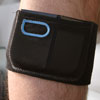











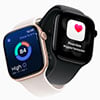
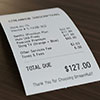




From vicki richardson on March 02, 2018 :: 4:11 am
i had a partial hip replacement will this help with hip pain and foot pain from a shot that hit the nerve on top of my foot
Reply
From Josh Kirschner on March 09, 2018 :: 8:36 am
TENS devices often work with these types of pains. You can give it a shot and if it works, great. Else, you can return it.
Reply